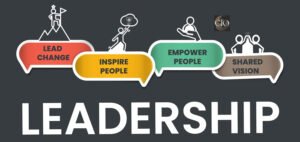Leadership is usually best thought of as a title or position—but at its most lasting version, it’s effect. Great leaders don’t just wield power to motivate their people; they create a persuasive presence that compels behavior, sparks action, and shapes culture. Their effect is not accident—it’s deliberate, built on principle, and exactly aimed at the values that they live each day.
This is not an authority in what the leaders talk, but an authority in what they do consistently. It is established on integrity, compassion, simplicity, and credibility—characteristics that, when compiled, create the master plan of constructing a culture that inspires sustainable action.
Culture: The Silent Leader of Every Organization
Peter Drucker famously said, “Culture eats strategy for breakfast.” That’s because culture, not any business plan or directive, actually determines how decisions get made, how folks show up, and how success is pursued. Culture is the water that an organization swims in—oftentimes invisible but ubiquitous, and impacting everything from employee engagement to innovation velocity.
And who creates it? Leaders do.
The tone, tempo, and values of an organization are a reflection of its leadership. A leader’s behavior is a ripple effect across the organization, reaching to every corner from communication to performance. When leaders practice walking the talk of accountability, collaboration, and curiosity, they go viral. When leaders dismiss them, dysfunction typically ensues.
Leaders can’t be mere passive spectators to culture—they’re its architects and custodians instead. Leaders who get it best know it, and they craft each touch point—feedback, meetings, recognition—on purpose.
Influence Starts with Self-Awareness
All blueprints have a starting point, and for leadership influence, it starts with self-awareness. Leaders who know their values, triggers, and communication patterns can lead from a true self. They know how their presence—tone of voice, facial expression, reaction—is affecting others.
Self-aware leaders are more adaptable as well. They can read the room, shift their message, and listen intently. This capacity to connect at the human level establishes trust, which is cash influence. Trustless leadership is transactional. Trust-based leadership is transformational.
And finally, self-aware leaders are okay with saying they don’t know. Humility ignites learning, fosters diverse views, and allows for a growth culture—ingredients required to create space where action and intention meet.
Vision: From Idea to Shared Movement
Not only are great leaders vision-havers—they understand how to catch that vision in shared purpose. They don’t only tell people where the organization is going; they tell them why it matters and how every contributor is involved in helping to make it happen.
This deliberate synchronizing of high-level purpose and work reduces high-level objectives to meaningful labor. It turns laborers into contributors and viewers into believers. When individuals grasp the “why” of the “what,” motivation is internal, and performance is purposeful.
Visionary influence leaders cause all action to return to purpose. They retell the story repeatedly, thereby making strategy story and direction movement.
Communication: The Tool of Cultural Transmission
Communication is the connection between action and culture in the influence blueprint. Excellent leaders communicate plainly and with intention. They do not talk corporate jargon or motivational nonsense—they talk to people, not at people. They speak as much as they listen. They ask excellent questions. They offer context, not merely direction.
Most importantly, they adapt their message to various publics and circumstances. They understand when to inspire, when to challenge, when to console, and when to have someone else take the wheel.
Efficient communication also involves the style with which feedback is given and communicated. Leaders who accept feedback as an improvement tool, not as a judgment tool, build a platform for learning. This encourages a culture of accountability, scrutiny, and improvement, but not anxiety or blame.
Consistency: Influence in Action
Influence is not created in a single keynote or in a team meeting—it is achieved through consistent behavior over time. Great leaders understand it is the little things that matter: being on time, making promises and keeping them, constructive conflict resolution, and regular giving of credit.
This predictability creates psychological safety, where individuals know what occurs and what is expected of them. It also embodies cultural values in action, as opposed to policy. For instance, if the value is cooperation, the leader works cooperatively. If the value is candor, a leader opens up.
This congruence of word and action creates a feedback loop that inspires belief, solidifies trust, and accelerates engagement.
Influence That Lasts
Action-shaping leaders and culture don’t merely get things done—they leave a legacy. Their impact doesn’t stop when they exit the room or the company; it’s sustained in the way people lead others, fix problems, and measure success.
They enable others to act in their own voice. They create a ripple effect in which values spill over, behavior shifts, and purpose grows. That’s the difference between authority and leadership: authority dominates the moment; influence shapes the future.
Conclusion: Leading from Within
Influence is no short cut to results—it is the basis of enduring leadership. It is gained through authenticity, extrapolated through actions, and extrapolated through other people.
In creating culture and action, master leaders have a template: they lead themselves, align people to purpose, communicate clearly, and act consistently. They know that real leadership is not being the boss, but setting the tone, creating the space, and unleashing the potential in others to shine.
Because ultimately, it’s not the loudest voice or the highest rank that makes a great leader—it’s the lasting impact they have.”.
Read More: The Leadership Multiplier: Amplifying Purpose Through People




